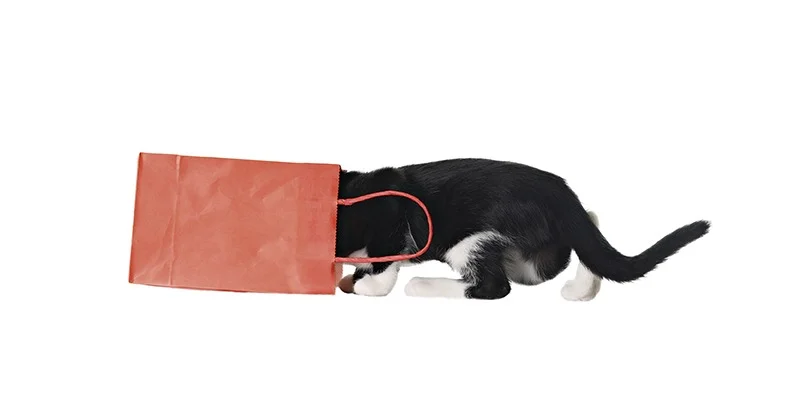
The gentle headbutts, hilarious “zoomies,” and chirps and purrs that seem to say, “I love you.” All describe the wonderfully unique ways cats enrich our everyday lives, simply by being themselves. But how can we engage with our feline friends in meaningful ways that enrich their lives in return?
According to Stephanie Turner, the first-ever Animal Enrichment Coordinator at the Dumb Friends League, enrichment “can reduce stress, alleviate boredom, challenge your pet’s mind, or just be plain old fun.” In many cases, a mentally or physically stimulating change in your cat’s routine or environment, combined with preventive veterinary care, can provide an effective solution for unwanted behaviors. In fact, feline anxiety, restlessness, or overstimulation often present as destruction, aggression, crying, or even house soiling, all of which can be redirected through thoughtful enrichment. As Stephanie explains, “[Giving cats] new and novel experiences is never a waste of time!”
Choosing the right enrichment activity for your cat begins with the basics. Start by asking yourself, “What do cats like to do?” Instinctually, cats like to stalk, pounce, climb, scratch, knead, and sleep. Accordingly, cat owners should plan activities and amenities to elicit these behaviors in ways that suit everyone in the family. Whether your cat is new to your life or has been by your side for years, here are five ways to enrich their lives and the bond you share:
- Create their dream home. As a territorial species, domestic cats care a lot about their environment. Living in a confined dwelling can interfere with their ability to exhibit natural behaviors, so it is our job to enrich their home as much as possible. High resting places, as well as private nooks, offer cats variety, comfort, and a chance to climb. Providing a clean litter box for every cat in your house (plus one, if possible) can help encourage healthy bathroom behaviors, especially if the box is filled with your cat’s preferred litter and is in a tucked away location. Additionally, scratching posts allow your cat to maintain their claws, stretch, mark their territory, and express emotions (and could save your couch in the long run).
- Reduce, reuse, recycle! Inexpensive household items could be worth millions in your cat’s eyes. Think toilet paper tubes filled with catnip or yummy treats, a cereal box with cut-out “windows” and toys placed inside, even discarded wine corks for them to bat around. And don’t forget about crinkly paper bags or cavernous cardboard boxes! These are perfect for hiding and can be used to engage your cat in foraging or sensory play. Just remember to monitor for safety when introducing any new items to your enrichment routine.
- Catch their eye. A hummingbird feeder outside your cat’s favorite window or a squirrel video on YouTube can energize even the sleepiest kitty. Interactive toys that your cat can chase or fetch also provide hours of entertainment for your feline companion.
- Make mealtime fun. Puzzle feeders offer your cat an added challenge when consuming kibble, while LickiMats make treat time a thrilling hunt. Additionally, fountains provide the sensation of drinking from a freshwater stream – a beloved pastime for many cats. Just be sure to introduce new foods gradually; any sudden change in your cat’s diet can cause tummy troubles.
- Share the love. Speaking your cat’s love language may take some time to master, but it is important to show them affection each and every day. For some cats, this may involve engaging in a slow blink or “pspsps” session to convey warmth and trust. For others, love may take the form of their favorite treat, a nice butt or chin scratch, or a snuggle shirt that smells just like you. With cats prone to anxiety or overstimulation, this means learning their boundaries, keeping interactions calm and brief, and only petting them in areas they find acceptable or pleasant.
Just like us, cats are individuals with specific likes and dislikes! Once you have a feel for your cat’s personality, don’t be afraid to try something new to strike their fancy. Consider different textures, sounds, scents, movement – even the slightest change in routine can deliver good results, encouraging confidence, curiosity, and well-being.
For more tips on how to enrich your cat’s quality of life, visit our behavior resource library at ddfl.org/pet-behavior-resource-center.
